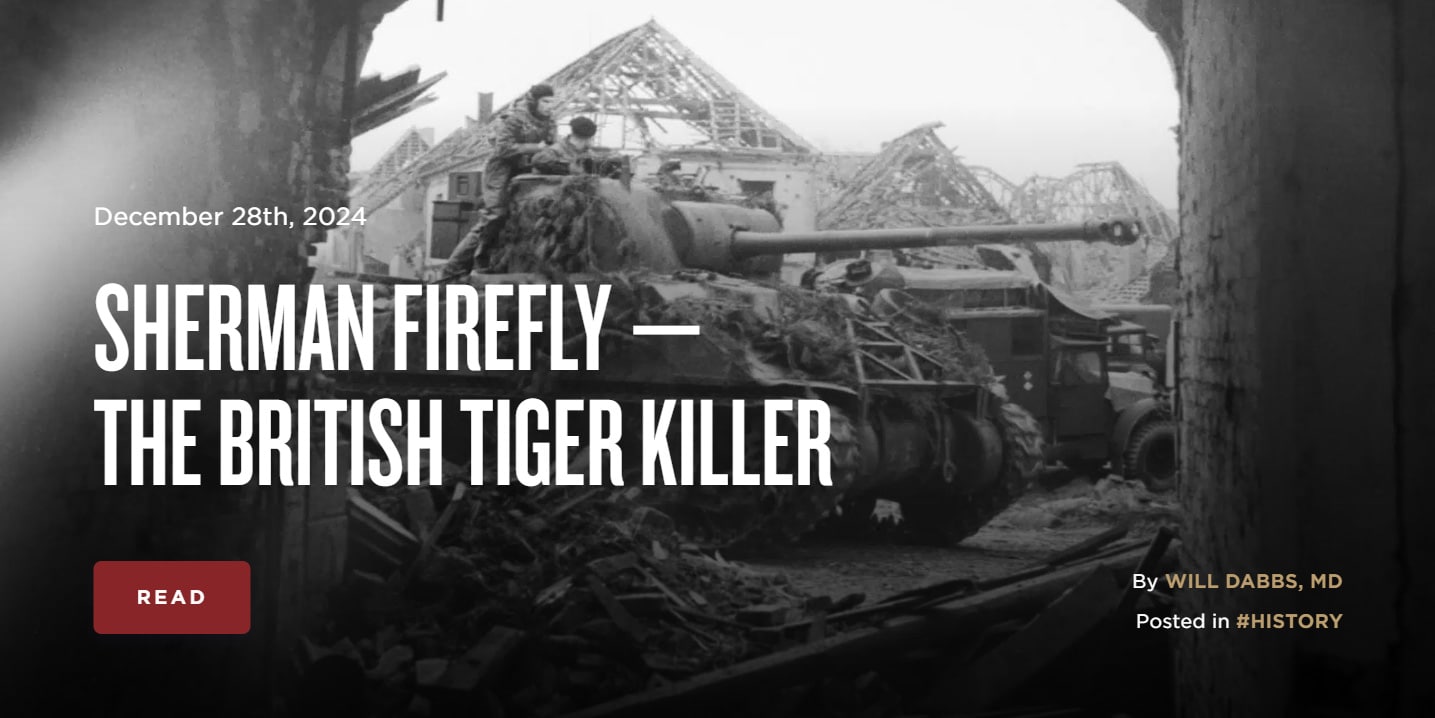Hello all, here is today's article posted on TheArmoryLife.com. It is titled “Sherman Firefly — The British Tiger Killer” and can be found at https://www.thearmorylife.com/sherman-firefly/.



Yes, the Brits didn't.I don't think the Brits got any Sherman's with the T23 turret, I know that we shoe horned the HV 76mm gun into the same turret as the Firefly did the 17pdr, you can see the aforementioned 76 in the 75 turret if you watch Kelly's Hero's, Oddballs Sherman was a post war rework of a 75mm Sherman we gave to Yugoslavia as military aid.
The 75mm turret soldiered on with a 105, and a 105 with a coaxial flamethrower into the Korean War
 www.theshermantank.com
www.theshermantank.com
 www.theshermantank.com
www.theshermantank.com
 www.theshermantank.com
www.theshermantank.com
 www.theshermantank.com
www.theshermantank.com

This was the AFV's equivalent of a lightweight boxer with the punch of a heavyweight. German tank crews made the black joke that one German tank was better than 12 American tanks, but they always had 13 tanks.Hello all, here is today's article posted on TheArmoryLife.com. It is titled “Sherman Firefly — The British Tiger Killer” and can be found at https://www.thearmorylife.com/sherman-firefly/.

